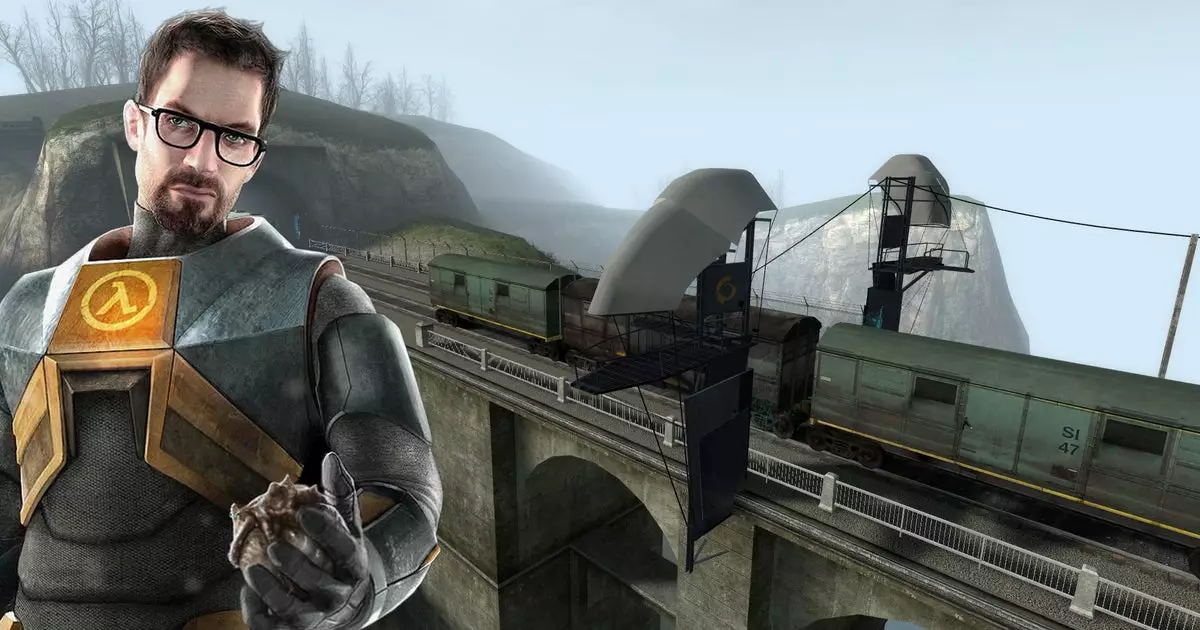In the fast-paced world of gaming, few titles have endured as long as Valve’s *Half-Life 2*. Its immersive storytelling, innovative physics, and iconic set pieces have etched it permanently into the annals of gaming history. Yet, over the years, the game’s mechanics—originally crafted with meticulous precision—have been subtly altered, often unintentionally, through updates and patches. Recently, Valve demonstrated a rare act of fan service by restoring the speed of a critical train in the “Highway 17” level, reigniting the possibility of beating a seemingly insurmountable obstacle that had challenged players for nearly two decades.
This tweak might seem insignificant to casual observers, but it speaks volumes about the relationship between developers and their enduring creations. By adjusting the train’s velocity, Valve effectively rebalances a moment of tension, allowing players to revisit an old challenge with fresh eyes. It’s a testament to how even minor modifications can breathe new life into a game’s legacy, rekindling the thrill of victory in a segment that once felt frustratingly unbeatable. It also underscores a fundamental truth: sometimes, the difference between defeat and triumph rests in subtle physics calibrations—a reminder that video game design is both art and science.
Why Small Tweaks Matter in the Big Picture
The update’s significance stretches beyond the mere gameplay mechanic. It reflects a core aspect of game preservation—maintaining a digital artifact’s integrity over the decades. *Half-Life 2* is no stranger to patchwork fixes, but the recent adjustment reveals a willingness to listen to the community and acknowledge what has made the game memorable: its challenge, its unpredictability, and its capacity to surprise even seasoned players.
From a broader perspective, such micro-adjustments are emblematic of a developer’s commitment to quality and authenticity. They suggest that behind Valve’s polished veneer lies a team that cares about the nuances—a recognition that the player experience can be shaped in small, strategic ways. It’s a subtle but potent reminder: games are living entities, evolving and adapting not just through new content, but via careful refinements to their foundational physics and mechanics. When these tweaks restore difficult moments to their original intended difficulty, they preserve the game’s identity, ensuring that its essence remains intact across generations.
The Cultural Significance of Nostalgic Preservation
For longtime fans, these updates offer more than just gameplay improvements—they serve as a bridge to the past. Nostalgia is a potent force in gaming, and *Half-Life 2*’s enduring appeal is deeply rooted in memories of struggling through its toughest sections. When Valve reintroduces the train challenge as it was originally envisioned, players are invited back to a shared experience that once defined their time with the game.
It’s remarkable how tiny adjustments can spark conversations about mastery and perseverance. The train sequence, once a symbol of inevitability, now stands as a testament to player ingenuity and persistence. By acknowledging that players can once again “win” against the train, Valve subtly affirms that mastery over game mechanics is still possible—and that overcoming difficulty, even after many years, is worth celebrating.
Furthermore, these updates highlight an unspoken truth about game design: perfection is elusive. Developers might initially craft their worlds with precision, but over time, technological shifts and subsequent patches can distort original experiences. Through targeted fixes, like removing an invisible wall or restoring an obstacle’s original speed, they aim to restore that authenticity—an essential act of preservation for cultural artifacts that have become part of our collective digital memory.
The Hidden World of Post-Launch Care
It’s tempting to dismiss such fixes as minor or insignificant, but beneath the surface lies a fascinating reflection on the ongoing dedication of game developers. Behind Valve’s public face is a small army of meticulous players—perhaps a single diligent employee or a tightly-knit QA team—working behind the scenes to preserve the integrity of a 20-year-old masterpiece. Their work is often unrecognized, yet it underscores an industry-wide understanding: a classic game’s value isn’t just in its initial release, but in its longevity and continual refinement.
While some might joke about a lone caretaker tirelessly sifting through old code with outdated tools, this story reveals a deeper truth. This ongoing commitment not only maintains a playable masterpiece but also honors the countless players who have invested time, effort, and nostalgia. It is a testament to how passionate communities and dedicated developers work hand in hand—sometimes through seemingly trivial patches—to ensure that classics remain vibrant and relevant.
In the end, these tiny but meaningful updates serve as a reminder that video games, especially the cultural milestones like *Half-Life 2*, are more than just entertainment. They are evolving relics of our shared history, deserving of care and precision. And perhaps most importantly, they demonstrate that the spirit of challenge—once thought lost in the shadows of updates—is still very much alive.

